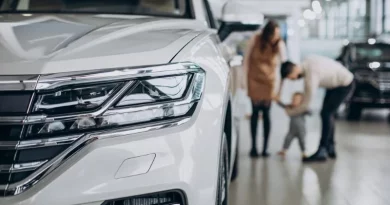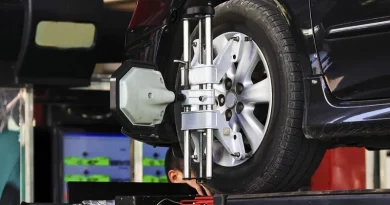How to Make Your Car More Environmentally Friendly
The way we use and maintain our vehicles plays a crucial role in our journey towards environmental responsibility. Although many of us wish to be able to drive less and reduce our reliance on cars, it is not always feasible. Luckily, there are numerous ways to mitigate the impact of our cars on the environment. From regular maintenance to installing LED headlights, every action counts towards reducing your carbon footprint and promoting a more sustainable future.
Performing Regular Vehicle Maintenance
One of the most straightforward steps towards a more eco-friendly vehicle is conscientious maintenance. Keeping your car in optimal condition not only ensures it operates efficiently but also significantly reduces its environmental impact. This includes routine oil changes, which keep the engine running smoothly and efficiently; timely replacement of air filters, to improve engine performance and reduce fuel consumption; and regular checks and maintenance of the vehicle’s exhaust system, to ensure emissions are within acceptable limits. Additionally, addressing any mechanical issues promptly, such as fixing leaks or worn-out parts, prevents excess fuel consumption and unnecessary emissions.
Ensuring Tire Management
Tires are a critical component of your vehicle’s overall efficiency. When tires are under-inflated, they create more rolling resistance, making the engine work harder and use more fuel. Regularly checking and maintaining the recommended tire pressure improves gas mileage and extends the lifespan of the tires, reducing waste and environmental impact. Additionally, consider the use of low rolling resistance tires to further enhance fuel efficiency. These tires are designed to minimize the energy lost during the tire’s rolling process, thereby requiring less energy to move the vehicle.
Installing LED Headlights
Another impactful way to make your vehicle more environmentally friendly is by upgrading to LED (light emitting diode) headlights. LED headlights are far more energy-efficient than traditional halogen bulbs, consuming less power and reducing fuel consumption. Furthermore, LED bulbs have a significantly longer lifespan, which means fewer replacements and less waste. Besides their environmental benefits, LED headlights provide brighter and clearer illumination, enhancing safety during nighttime driving. Their instant on-and-off feature is especially beneficial for brake lights, improving reaction time for drivers behind you.
Smart Use of Air Conditioning and Heating
Air conditioning systems, particularly in older vehicles, can consume a significant amount of energy, leading to increased fuel consumption and higher emissions. To minimize this impact, it is advisable to use air conditioning sparingly, especially when driving at lower speeds where opening windows can be an easy and effective alternative. Additionally, parking in the shade or using sunshades can keep the interior of the car cool naturally and reduce the need for air conditioning. In colder weather, limiting the use of seat warmers and defrosters to only when it is necessary can conserve energy.
Adopting Eco-Friendly Driving Habits
One of the most effective practices is driving at a steady pace with gentle acceleration and braking. This significantly reduces fuel consumption and emissions. Avoiding high speeds and aggressive driving behaviors also extends the life of vehicle components like brakes and tires. Minimizing idle time is another important aspect; turning off the engine during prolonged stops can lead to substantial reductions in fuel waste and pollutant emissions. Planning routes efficiently to avoid heavy traffic and using cruise control on highways can also contribute to better fuel economy.
Opting for Eco-Friendly Fuels
Opting for eco-friendly fuels is an effective way to reduce carbon emissions. Biofuels, such as biodiesel and ethanol blends, are renewable alternatives that can significantly lower the carbon footprint compared to traditional gasoline or diesel. These fuels are produced from biological materials like plant oils and offer a cleaner burning process. Additionally, for vehicles compatible with higher ethanol blends like E85, using these alternatives can further reduce the dependency on fossil fuels. You should also ensure that you are using the correct grade of fuel recommended for your vehicle, as using a lower grade than advised can lead to inefficient combustion and increased emissions.
Leveraging Technology
Modern technology offers several tools to assist in eco-friendly driving. Apps that monitor and provide feedback on your driving habits can help you develop more responsible driving patterns. You can also use GPS navigation to find the quickest or smoothest routes to save time and reduce fuel consumption. Similarly, you can use navigation apps to find out the best hours to travel, allowing you to avoid traffic congestion and minimize the time spent idling in traffic. In addition, some apps allow users to carpool with other drivers, which directly reduces the number of vehicles on the road and decreases overall emissions.
Conclusion
While we may not be able to eliminate our carbon emissions from driving, prioritizing eco-friendly options and behaviors and making the most of technology can make a huge difference to reducing fuel consumption and emissions. The best part is that these efforts not only reduce your vehicle’s carbon footprint but also improve fuel economy, potentially saving you money in the long run. So, why not enjoy the convenience and comfort of having a car and be kinder to the environment at the same time?




